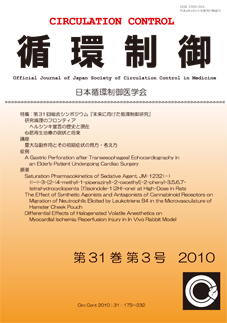Volume 31, Issue 3
Displaying 1-4 of 4 articles from this issue
- |<
- <
- 1
- >
- >|
case reports
-
Article type: case reports
2010 Volume 31 Issue 3 Pages 193-195
Published: 2010
Released on J-STAGE: May 31, 2013
Download PDF (131K)
original articles
-
Article type: original articles
2010 Volume 31 Issue 3 Pages 196-201
Published: 2010
Released on J-STAGE: May 31, 2013
Download PDF (234K) -
Article type: original articles
2010 Volume 31 Issue 3 Pages 202-207
Published: 2010
Released on J-STAGE: May 31, 2013
Download PDF (249K) -
Article type: original articles
2010 Volume 31 Issue 3 Pages 208-213
Published: 2010
Released on J-STAGE: May 31, 2013
Download PDF (213K)
- |<
- <
- 1
- >
- >|
